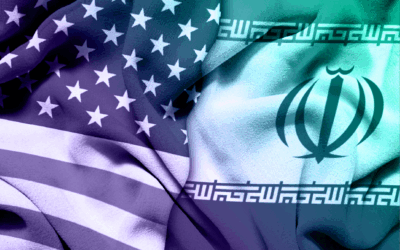By Daniel Silverberg, co-head of Capstone’s National Security Practice
Notwithstanding US strikes against Houthis in Yemen and Iranian proxy groups in Iraq and Syria, this week could see serious movement to reduce conflict in the Middle East. A US-negotiated hostage agreement among Hamas, Israel, and Qatar would clear the way for a ceasefire in Gaza, lower the regional temperature, and give space for US-Israel-Saudi negotiations to progress. Simultaneously, a cessation of conflict in Gaza will not end ongoing threats to US interests in the Middle East. The Gaza war is at the epicenter of a web of interconnected conflicts that will continue to fester, and it is critical for companies and investors to assess where danger will lurk even if a deal is reached between Hamas and Israel.
1. Hamas and Israel are moving towards a hostage deal, but major obstacles remain
Brokered by the US, Hamas, and Israel continue to inch towards a hostage deal that would involve, at a minimum, the release of Israeli hostages in return for significant Palestinian prisoner releases, a prolonged pause to hostilities, and potential safe passage for Hamas’ leadership. This development corresponds with a shift of operations in the north, where Israel is moving towards low-intensity conflict and flooding Hamas tunnels. Secretary of State Antony Blinken will travel to Israel, Qatar, and Egypt this week to advance negotiations. A hostage deal is tough for Israel to pursue for several reasons. First, Israel’s leadership believes it has not yet achieved its goal of destroying Hamas’ capabilities – particularly Hamas’ vast tunnel network – and a hostage deal requiring a permanent end to hostilities, which Hamas is demanding, would undermine that military objective. Israel has made clear it will not tolerate Hamas preserving its capability to launch missiles or threaten Israel. A ceasefire would also leave Netanyahu’s coalition vulnerable to collapse, particularly if Hamas demands the release of convicted terrorists with civilian blood on their hands.
Brokered by the US, Hamas, and Israel continue to inch towards a hostage deal.
However, the politics in Israel may be shifting on the war. Israel’s opposition has given Netanyahu space to forge a potential agreement, and there appears to be growing pressure on Netanyahu to prioritize hostage rescue over the “total victory” over Hamas, which leaders now openly question as a viable goal. Meanwhile, two extremists in Bibi’s cabinet, Ministers Itamar Ben-Gvir, and Bezalel Smotrich, appear looking for an excuse to leave Bibi’s coalition regardless of a hostage deal, highlighted by Minister Ben-Gvir’s panning of Biden this week, usually a redline. Ben-Gvir, in particular, is likely calculating that if an election were called, he could assert himself as the clear leader of Israel’s right and would have a seat at the war table. These ministers’ departures could give Bibi space to negotiate a deal. He has little to lose if the coalition will fall anyway, thus raising the stakes of US diplomacy this week. As of this posting, the ball is in Hamas’ court to respond to the latest proposal that Israel offered via Qatar and the U.S.
2. The West Bank is a cause for concern and implicates a Saudi Peace Deal
The West Bank remains an underappreciated threat to regional stability. The Palestinian Authority (PA) and Israeli forces continue to enforce a near lockdown of the territories, but violence continues. The West Bank economy has been devastated by the Gaza conflict, as Israel barred entry of Palestinians to Israel, and Israeli settler violence, while decreasing, remains a serious issue. The Biden administration continues to pressure Israel on a two-state solution specifically to address the chaotic situation in the West Bank. Still, PM Netanyahu continues to resist any role for the PA. Minister of Strategic Affairs Ron Dermer was in Washington this past week to reiterate Netanyahu’s views regarding ‘day after’ scenarios and likely explore the latest dynamics on a US-Israel-Saudi normalization deal. Such a deal would require progress on the Palestinian front, but the Saudi price for a deal regarding steps for the Palestinians has likely increased. Dermer likely communicated Israel’s resistance to any serious role by the PA. Notwithstanding popular support for the Palestinian cause, Saudi’s leadership remains invested in forging a deal.
3. Strikes will not change the US posture in Iraq and Syria
Some experts characterized US strikes against Iranian proxies in Iraq and Syria in response to the killing of three servicemembers as a major escalation. We disagree. The fact that Biden opted to hit Iranian proxy targets and not Iran directly, and that he waited several days to do so, indicates that the Biden administration is seeking to give Iran an offramp to the latest round of hostilities. There will likely be another round of attacks, but we expect ‘status quo’ attacks without a major escalation, even if the US hits Iranian Revolutionary Guard trainers. The Biden administration seeks to prevent direct conflict with Iran, and Iran likely will tolerate attacks on its proxies, perhaps even on IRGC trainers in Syria and Iraq, as long as such attacks are viewed as proportional to the deaths of US servicemembers. We further do not expect that a hostage deal will end the targeting of US forces in Iraq and Syria, given Iran’s ultimate objective to remove the US from the Middle East.
4. Israel-Lebanon Border at status quo
Notwithstanding daily exchanges of rocket fire, there has not been a major shift in the status quo. The Biden administration, led by Amos Hochstein, continues to try to negotiate a deal wherein Hezbollah would retreat to the 2006 UN-designated border line. Hezbollah remains highly sensitive to Lebanese public opinion and appears to be giving space to Hochstein and the US to negotiate a deal that would allow the return of internally displaced civilians on both sides of the border. Meanwhile, Israel appears to be holding to the status quo, in part to give diplomacy a chance to work (Hochstein was in Israel on Feb. 4) and possibly out of a concern about whether Israel has the munitions to sustain a war on the northern front. A key risk remains either side overestimating the degree of leverage it believes it wields.
5. The Red Sea will remain turbulent
The US and coalition partners continue to strike at Houthi targets threatening Red Sea shipping. The Houthis are elusive and have experience in mobile terrorism, honed during years of conflict with the Saudis, but their capabilities remain relatively rudimentary (they’ve fired hundreds of munitions, with minimal success). US congressional hawks view Iran as the puppet master behind the Houthi attacks, but experts are more skeptical of the degree to which Iran actually controls the Houthis. Some speculate that Iran is concerned about the attacks on shipping, particularly since Russian and Chinese vessels are no longer traversing the Red Sea, despite Houthi promises of safe passage. The US increased interdiction efforts, and Iranian decision-making might slow down the shipment of arms to the Houthis and starve them of capacity to launch attacks. We do not expect the US to increase military involvement against the Houthis, but we also do not expect shippers to return to the Red Sea anytime soon, even though the actual threat might be manageable. A Gaza hostage deal would theoretically remove the excuse the Houthis proffered to attack shipping, but it is quite likely the Houthis would continue to threaten western vessels as part of its effort to raise its own profile and leverage.
The bottom line is that Iran and its proxies will continue to pursue the goal of removing US forces from Iraq and the broader Middle East.
The bottom line is that Iran and its proxies will continue to pursue the goal of removing US forces from Iraq and the broader Middle East. Ending the Gaza war will remove one pretext for striking at Israel and the US, but it will not remove fundamental tensions between major regional players. Ironically, the increasing chaos is pushing Saudi leadership towards the US.

Daniel Silverberg, co-head of Capstone’s National Security Practice
Read more from Daniel:
Five Underappreciated Near-Term Foreign Policy Developments
Biden’s G20 China Play: Doubling Down on Infrastructure
Three Underappreciated Global Developments Impacting Energy Security
Read Daniel’s bio here.



























